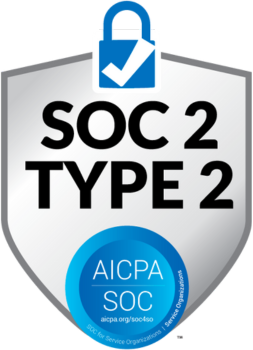

Want to inspire creativity and innovation across your organization? Many companies are shifting leadership up by experimenting with new styles of management – with fewer managers in the picture.
And with 70% of employees actively disengaged – it’s time to rethink those traditional structures that are fueling low productivity, high employee turnover, and missed opportunities for growth.
So how are companies empowering and motivating employees to become their best, most-productive selves? They’re building self-managed teams that autonomously manage themselves. Imagine a group where each member is a proactive team leader, entrusted to make decisions to support the organization’s goals. Freed from micromanagement under a traditional boss, these agile teams become innovative powerhouses where creativity flourishes, and ideas flow freely every day.
Wondering how this could possibly work? Learn everything you need to know about self-managed teams, including what they are, the pros and cons, and how you can start building them in your organization.
What are self-managing teams?
A self-managed team is a team of employees who plan and execute their work together, without a supervising manager. There is no "boss" in charge of these teams; the team collectively and autonomously acts as its own boss. Team members take ownership of their tasks, collaborate, and jointly plan their objectives as a team.
If the traditional management structure is like a four-way intersection with a traffic cop at the helm, self-managing teams would be more like a roundabout — vehicles navigate based on a set of shared rules, with each driver contributing to the smooth flow of traffic. In a self-managing team, the power to make decisions is distributed among the entire team to keep the 'flow' of work going. They collaborate, share insights, and navigate their tasks collaboratively, leading to a more agile and efficient system.
So are self-managed teams the same thing as "self-governing teams," "self-directed teams," "flat hierarchical teams," and "self-organizing teams"? While sometimes used synonymously, they're not quite the same. The Hackman Authority Matrix below breaks down the differences between these management types.
Hackman Authority Matrix

But despite their name, self-managed teams do not necessarily engage in all management tasks. Upper management is still responsible for setting the overall direction, and designing the team and organizational context. But in self-managed teams, monitoring, managing, and executing work is all handled by the employees themselves.
How do self-managed teams stay on track without a supervisor? Self-management often enables teams to overperform by building intrinsic motivation in every team member. That is, "the incentive we feel to complete a task simply because we find it interesting or enjoyable." So while traditional management is built on extrinsic motivation (employees complete tasks for external rewards) – intrinsic motivation is actually 3x more impactful on employee engagement.
The concept of self-management might seem bold, or even a bit crazy, to some. But it's not a fleeting trend. These days, around 80% of Fortune 1000 companies use some sort of self-managed teams within the organization. So what do you say? Are you ready to build self-managed teams at your organization?
Benefits of self-managed teams
1. Improve productivity & efficiency
As we mentioned, in traditional hierarchical structures, employees may often find themselves driven more by external rewards or fear of punishment than intrinsic motivation around their work. However, this inherent desire to excel, achieve, and contribute meaningfully can be a much more powerful motivator. In fact, intrinsically motivated employees are 32% more committed to their job, have 46% higher job satisfaction, and perform 16% better overall.
Take SEO Travel, for example – they allow employees across their entire organization to set their own hours, sign off on their own annual leave, and self-manage all of their work. While employees have 'core roles' at SEO Travel, they can create or contribute to other broader business projects called 'Dream Circles' for employees to freely engage where they’re passionate.
2. Increase agility & flexibility
Tired of teams getting bogged down by bureaucracy? Since a self-managed work team is untethered, they can quickly adapt to challenges and opportunities way faster than a traditional team often can. Large companies (like Google, for example) are notorious for their painfully slow decision-making process. Of course, Google has a massively complex infrastructure to manage. But speed matters in business, sometimes more than anything.
So what if you could streamline the decision-making process with your self-managed team members executing on decisions at the front lines? Their firsthand knowledge and expertise puts them in the perfect position to make those quick decisions, while eliminating bottlenecks, to drive efficient outcomes.
3. Promote creativity & innovation
Want your team members to explore new ideas, take risks, and think outside the box? Successful self-managed teams cultivate an atmosphere where creativity is both nurtured and celebrated. They can experiment and innovate without fearing judgment or reprimand, propelling their organizations forward with fresh and groundbreaking solutions.
That's not to say that traditional teams can't do this too. It's just that a successful self-managed team has no choice – considering no one else is there to do it for them. As the old proverb goes, "Necessity is the mother of invention."
A self-managed team can also bring out more diversity within the group – across skills, experiences, and backgrounds – allowing employees to feel more comfortable sharing perspectives in their team. This rich tapestry of ideas is the perfect setup for teams to tackle challenging problems from multiple angles and find new innovative solutions that may otherwise not have been discovered.
4. Create happier & more engaged employees
Having trouble getting employees engaged at work? Unlike a traditional hierarchical structure, self-management nurtures a greater sense of ownership and fulfillment among team members. When individuals have a say in how they work (and contribute to the team's success), both job satisfaction and engagement goes up, which is going to help your organization's long-term success. 74% of employees are more effective at their jobs when they feel heard – and there’s really no better way to feel heard than through self-management.
And with the power to manage their own work plan, self-managing teams experience a much healthier work-life balance. While that’s not to say your team will never work late again – the self-management flexibility allows employees to better balance work commitments with personal needs, reducing burnout and improving their overall well-being. Considering 52.2% of burnout comes from work-life balance issues, self-management could be an antidote to your organizations chronic work-related stress.

Finally, talented employees seek more than just a paycheck – they yearn for a sense of purpose and fulfillment in their work. In fact, 83% of employees report "finding meaning in day-to-day work" is a top priority. Self-managing teams offer precisely that by allowing team members to actively contribute to the organization's success and see the direct impact of their efforts.
Disadvantages of self-managed teams
1. Managing conflict & decision-making
One of the most significant challenges of a self-directed team is actually the whole self-direction thing. Without a traditional manager to have the final say, some self-managed teams can find themselves bogged down by the decision-making process, especially in cases of conflict or strong opinions.
After all, conflict is a natural part of any team dynamic, but can become more complex as power and decision-making are distributed throughout a self-managed team.
2. Resistance to change
When introducing self-managing teams to your organization, resistance to change is inevitable – especially to those accustomed to traditional hierarchical structures.
The fact is that not everyone wants to work in a self-managed team. This dynamic ultimately requires a lot of self-motivation and willingness for self-directed work. Self-management naturally comes with a lot of ambiguity, and some employees may simply want to receive their responsibilities from a manager, do their jobs, and go home. And if your organization has a robust set of middle managers, they may not be happy about potential changes to their roles.
So if you're implementing self-managed teams at an organization for the first time, you may encounter some resistance to the idea. Make sure to get your employees thoughts before implementing, provide training around the transition, or consider creating self-managed teams for new groups you want to form through new hires.
3. Balancing autonomy & accountability
Some employees are cut out for self-managed teams, and some aren’t. One of the biggest determining factors is how well they can balance autonomy and accountability around their work. Too much autonomy can lead to disjointed efforts and misaligned goals, too little may stifle creativity and demotivate team members.
Self-managed teams need to balance the independence of each member with the overall accountability of the group. It's all too easy to imagine a "you're not the boss of me" scenario without a supervising manager in place. If team performance is slipping, the entire group is responsible for correcting it. And for some, it may feel much easier to manage others than actually managing themselves – also known as the Paradox of Self-Leadership.
Some organizations strike this balance with a liaison between the self-managed team and the company's senior leadership team.
Let your team take the reins through self-management 🔄
Self-managing teams are more than just a trendy concept – they’re a powerful force reshaping the future of work. We've seen how this team structure can boost decision-making, fuel employee engagement, and adapt to changes with remarkable agility. Embracing this paradigm shift requires a leap of faith from leaders who must let go of some control and trust their team members' expertise to build self-managed teams. Yet, the rewards are immense – a workforce that feels valued, empowered, and motivated to bring their A-game.
Did we miss anything? How do self-managing teams operate in your organization? Tweet us @reclaimai to let us know!
Trend Reports
Ready for an AI calendar?
Auto-schedule your tasks, habits, breaks, & meetings on Google Calendar.
Start scheduling →It's free! 🎉












.svg)
.svg)
.svg)
.svg)
.svg)


